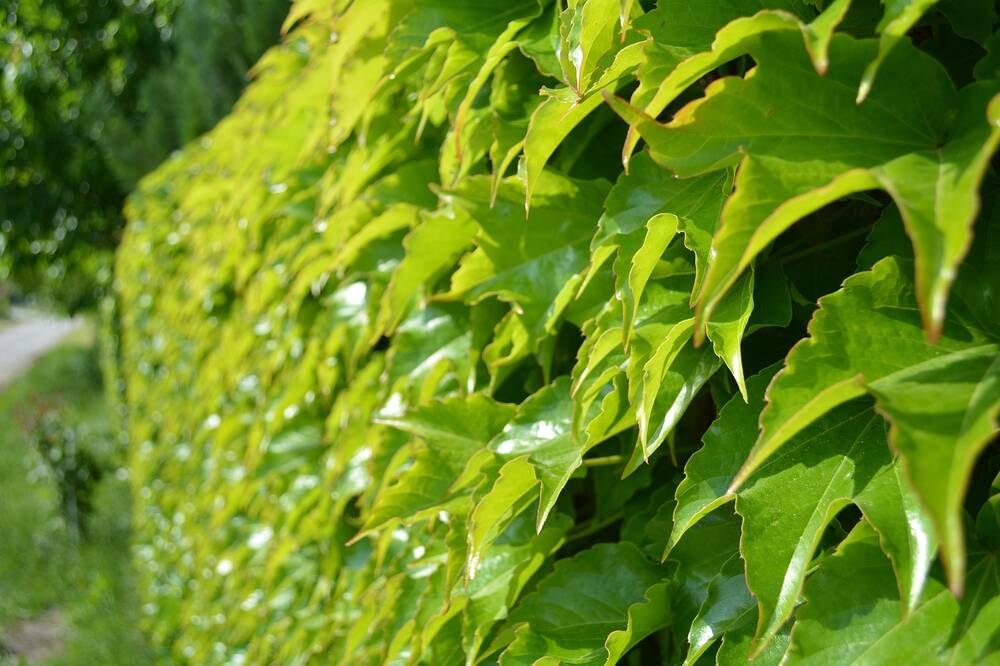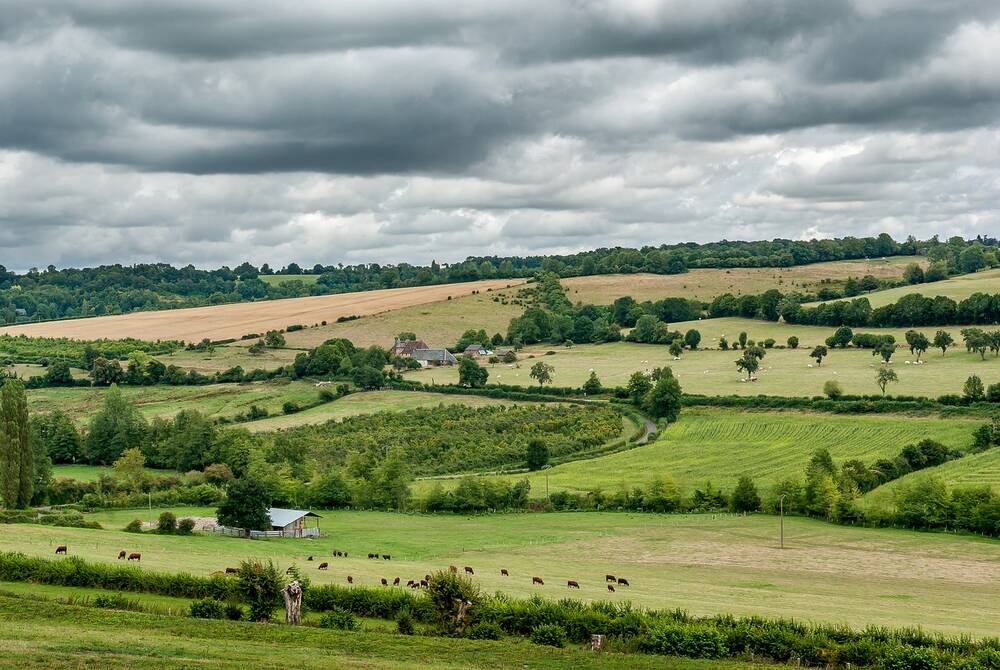Hedgerows are a vital part of UK wildlife but are highly endangered, having been lost in urbanisation, agricultural expansion, development and the worsening climate.
Despite the fact that over 90% of them were humanly planted centuries ago, hedges provide immense ecological value and play a crucial role in supporting natural ecosystems.
This article delves into the various types and forms of hedgerows, including the diverse shrubs and trees that make them up, and examines the unique features of each. It also highlights the primary mammals, birds, and invertebrates that rely on hedgerows for habitat, discusses the major threats these ecosystems face and presents strategies for their preservation, backed by facts and statistics.
What are Hedgerow Habitats?
Hedgerow habitats are linear features that offer immense historical, cultural, aesthetic, and, most importantly, ecological value. Often overlooked as simply ‘hedges’, these are some of the best hotspots for biodiversity in the UK, homing thousands of species of mammals, birds and invertebrates including many of those rare and endangered.
They directly counter habitat fragmentation by facilitating safe travel between landscapes and fostering strengthened ecosystems with diverse plant and animal species that are resilient to threats such as invasive species and climate change.
They tend to be packed out with herbaceous vegetation, such as dense wildflowers and grasses at their base, providing additional habitat, food, and shelter for wildlife.
In the first Biodiversity Action Plan (BAP) in 1994, hedgerows were identified as a priority habitat. The action plan triggered multiple conservation strategies, such as the agri-environmental schemes which financially incentivised farmers to manage and restore their hedgerows.
The Purpose of Hedgerows
Beyond their innate cultural values, UK hedgerows are invaluable for ecosystems, nature and the environment. First and foremost, they support a range of species through various levels of the food chain by providing shelter for nesting, resting and feeding.
They facilitate habitat connection by creating ecological corridors, encouraging the genetic diversity foundation for a solid, healthy ecosystem.
They encourage swathes of pollinators in summer, enhancing all surrounding biodiversity and nature. They regulate the climate by capturing and storing carbon, preventing soil erosion, and even managing water runoff.

Key Features of Hedgerow Habitats
Hedgerows encompass a broad range of shapes, forms, and features.
A primary feature of a hedgerow can be its dense shrubbery foliage; creating essential spaces for small mammals, birds and wildlife to shelter, nest, rest and feed.
Some hedgerows consist of a diverse mix of woody species, which produce nuts, berries, and fruits that are essential in the diet of many small birds. Some sprout nuts, some produce hot pink fruits and some winged leaves that spin down like helicopters.
Furthermore, many forms of hedgerow produce berries in autumn, such as sloe berries, elderberries and hawthorn berries; essential in the diet of many small birds.
Another key feature is the supporting and adjoining hedgerow trees, such as Ash, Oak or Beech, that add a vertical structure to the linear habitats, extending them while offering a canopy cover for further shelter.
The Different Types of Hedgerow Habitat

Hawthorn
Hawthorn hedgerows are native to Europe and parts of Asia, consisting of thorny, dense shrubs that grow white cluster flowers in May and red berries in autumn.
These hedges support more than 300 types of insects, including the common emerald and lappet moth, alongside nesting robins and wrens, as well as thrushes and blackbirds feeding on the berries.
The hawthorn is linked to May Day as a pagan symbol of fertility.
Blackthorn
The blackthorn hedgerow is very common in the UK, with white flowers in March-April providing one of the earliest food sources to pollinators. Its dense foliage is attractive to moths like the yellow-tail, lackey and swallow-tailed moth, while further providing foraging habitats for a range of birds to nest and feed, such as the blue tit bird hunting for aphids.
Birds and small mammals like bank voles will enjoy the sloe berries in autumn and winter, notably used for sloe gin, which has a tart, sweet taste.
Hazel
Hazel hedgerows are common in the UK, especially within rural areas with hedgerows as well as ancient woodlands.
The small tree or multi-stemmed shrub produces male yellow catkins, a dangling column, about 6 centimetres long, containing over 200 individual flowers. It also features small red flowers, which upon pollination from the catkins, transform into hazelnuts as a valuable source of food for wildlife such as red squirrels, jays and wood mice.
Their prolonged history of coppicing has kept them a sustainable source of wood, used widely in hurdles, fencing and construction.
Ash
Ash trees thrive in woodlands as well as urban areas, usually found interspersed with hedgerows. Their leaves turn golden in autumn, contributing towards autumnal beauty.
Though threatened by ash dieback disease, the tree is commonly found across the UK.
These large deciduous trees are known for their compound leaves, with small purple-black clusters of flowers in April-May that develop into winged seeds in autumn, a vital food source for bullfinches and other birds.
Ash wood is strong and flexible, utilised well in construction, and crucial for invertebrates like the stag beetle when it turns to deadwood.
Privet
Privet is a shrub that forms dense hedgerows, heavily common in central and southern England as a popular hedging choice for urban areas and gardens. This is due to their hardiness and ability to withstand frequent pruning, making them ideal candidates for a neatly managed or formal hedge.
Its small white flowers in June-July support a range of pollinators, turning into blackberries in autumn, toxic when ingested by humans but well enjoyed by birds like thrushes and blackbirds.
Oak, English
The English oak is an infamous sign of the English heritage and countryside, occurring alongside or in hedgerows such as the hawthorn or hazel, expanding the hedgerow’s habitat scope and adding vertical structure.
They live long and strong, with deciduous, lobed leaves, male catkins, plus flowers in April-May. When pollinated, these develop into acorns; a key food source for many species.
The tree itself supports over 2,300 different species, from lichens and fungi to owls and woodpeckers.
Yew
The yew is an evergreen tree that usually complements holly or hawthorn hedges. Its long lifespan and dense foliage provide ecological benefits, with white flowers every March-April and red berries in autumn; essential food for some birds but toxic to many other animals.
Their lush dark green foliage creates nesting spots, as well as essential cover for badgers, deer and other mammals.
With some yews over 2,000 years old, yew trees wield significant cultural and historical importance, frequently found at ancient woodlands or churchyards.
Holly
Holly can be a shrub forming full hedgerows as well as a small tree complementing other forms of hedgerows. Throughout the UK holly thrives, commonly in woodlands and gardens, as its evergreen maintains aesthetic beauty year-round.
Its famous berries persist well into winter, as a unique food source where elsewhere is scarce, especially for redwings and blackbirds.
Its inherent Christmas connotation symbolises festivity and enduring life through the winter months, with glossy leaves and warm red berries an emblem of holiday decoration and seasonal beauty.
Box, Common
The Common Box is a shrub that creates long, dense, evergreen hedgerows. They are used largely in formal gardens, appearing more in the South of England.
It’s mostly found in structured, managed contexts, and supports caterpillars amongst a range of insects, as well as many smaller birds.
Boxwood’s fine-grained, dense nature makes it an ideal candidate for wood carving and engraving, particularly popular in the 17th to 19th centuries for printing illustrations to a high level of detail.
Beech
Beech trees frequently appear alongside shrubs like hawthorn or holly, providing a thick canopy cover to hedgerows as well as food, shelter and shade for a diverse range of wildlife.
They are more common in the South of England, with many beech woodlands and forests.
With male flowers pollinating in April-May, and female flowers growing into ripe beechnuts in autumn, the beech feeds birds like jays and mammals such as squirrels amongst others.
Field Maple
The Field Maple is a smaller tree that appears frequently near or in hedgerows such as hawthorn or blackthorn. Its lobed leaves shine golden yellow in autumn, with small yellow-green flowers in May, and the female flowers develop into winged seeds in autumn—copters—that flutter and spin down to the ground.
The tree itself supports more than 60 insects, including the mocha moth and the field maple aphid, with the autumnal seeds feeding a range of birds and small mammals.
Elder
Elder is a small tree or larger shrub, frequent in hedgerows, especially amongst rural areas. It bears varied ecological benefits, as its fast-growing nature creates dense, long hedgerows providing ample food sources for wildlife throughout the seasons.
It blooms large white elderflowers in June-July, attracting many pollinators like hoverflies and bees, which then transform into black/dark-purple berries when approaching into autumn, attracting blackbirds, warblers and other birds.
Dogwood
Dogwood, a deciduous shrub, often features in hedgerows alongside hawthorn and blackthorn. Its vibrant red stems provide a striking contrast to its white flower clusters, enhancing its ornamental appeal. It offers significant ecological benefits, attracting various pollinators with its flowers, thereby enriching the biodiversity of the area.
The white flowers in May-June transform into dark purple or black berries in autumn, a key source of food for thrushes and blackbirds alongside bees and hoverflies.
Dog Rose
The dog rose is a notable climbing shrub, with long, arching stems that climb over plants and structures, leading to extensive and dense hedgerows. Not only does it produce gorgeous pink flowers with a sweet fragrance in June-July, but once pollinated, produces hips, a red fruit packing more vitamin C than oranges and blackcurrants.
Their slightly tart taste goes well into jams, pies, jellies and stews, as well as dog rose syrup, used traditionally for vitamins.
Spindle
Spindle is another deciduous shrub that commonly goes into hedgerows across the UK, and uniquely produces distinctive hot pink fruits.
Greeny-yellow flowers bloom in May-June, which once pollinated develop into bright pink fruits with orange seeds, or ‘spindle berries’, which add a vibrant colour to the hedgerow in autumn.
The fruits are completely toxic to humans but favoured by sparrows, robins and other birds which help successfully disseminate the seed. Historically, the seeds have been used to create dyes, due to their vibrant tone.
Guelder Rose
The Guelder Rose is also a deciduous shrub that contributes seasonal flowers and berries to a hedgerow; common throughout the UK.
Its white flowers bloom in May-June, turning into red berries in autumn which attract and appeal to pollinators, plus are a crucial food source for waxwings and bullfinch birds, with dense shrubby foliage offering shelter and nesting spaces for wildlife.
Its clusters of white flowers lend well to ornamental beauty, making it a solid choice for aesthetically-kept gardens across the UK.
Animals That Live In Hedgerow Habitats

Mammals
Hedgerows across the UK are home to a wide range of mammals. Operating as wildlife corridors, small mammals such as hedgehogs, bank voles, dormice and wood mice can travel between habitats, as well as utilise the hedges for shelter, nesting and food sources.
Larger mammals like foxes and badgers use hedgerows for cover to aid their hunting or movement between habitats. Furthermore, rabbits can be found in burrows near hedgerows, as well as bat species like the pipistrelle that feed on hedgerow insects.
Birds
The abundance of berries produced by multiple hedgerow shrub plants are essential in the diets of many small birds, as well as nuts, which can be key food sources throughout the winter.
Hedgerows are sites for birds like robins, wrens and song thrushes to nest in the foliage, hidden and sheltered from harm.
Larger birds of prey, like owls and kestrels, use hedges to hunt the smaller mammals and birds.
What’s more, migrating birds may use the habitats in a stopover, fueling up on food and rest before the next flight.
Invertebrates
Many invertebrates will occupy hedgerows for their ecological benefits, especially when flowers come into bloom; attracting bees, butterflies, hoverflies and many other pollinators.
Caterpillars, moths, beetles and bugs feed on parts of the hedgerow, such as shield bugs scouring the leaf litter and decaying wood.
Many spiders will take home in the hedges, preying on smaller insects and regulating the food chain.
Threats & Conservation
Half of the UK’s hedgerows have been lost in the last 75 years, significantly contributing to the decline in biodiversity.
Modern farming processes use large-scale, heavy-duty machinery to optimise and yield the maximum crop production, meaning that hedgerows must be wiped out to make room.
The prevalence of monocultures results in a significant decline in biodiversity. As a result, surrounding hedgerows receive less pollination and ecological support. Additionally, pesticides routinely sprayed on crops can drift with the wind, contaminating nearby hedgerows.
Climate change poses a threat to hedgerows by enhancing unexpected weather conditions such as drought and flooding, and pollution can jeopardise ecological conditions such as emissions disrupting air quality or runoff bringing chemicals into the soil.
A primary method of conservation in England is Biodiversity Net Gain—introduced February 2024, all new development that actively disrupts a hedgerow habitat now must, by law, recreate that hedgerow habitat to a gain of 10% and enhance nature. Our BNG Marketplace facilitates this by connecting developers with landowners.
Many conservation organisations focus on hedgerows’ need for restoration, such as The Tree Council—a registered charity that runs a Hedgerow Harvest project to spread awareness on their importance.
Hedgerow Habitats Facts & Stats
- Hedgerows support 80% of UK woodland birds, 50% of mammals and 30% of butterflies.
- We’ve lost 50% of our hedgerows since World War II, and 60% of those remaining are not in good condition.
- More than 600 plant species are known to live in hedgerows, supporting over 1,500 insects.
More Information
https://www.woodlandtrust.org.uk/trees-woods-and-wildlife/habitats/hedgerows/
https://www.rjtreesandhedging.co.uk/blog/things-you-might-not-know-about-farm-hedging/
https://www.wildlifetrusts.org/habitats/farmland/hedgerow
https://www.countryfile.com/wildlife/trees-plants/hedgerow-plants-flowers-guide

